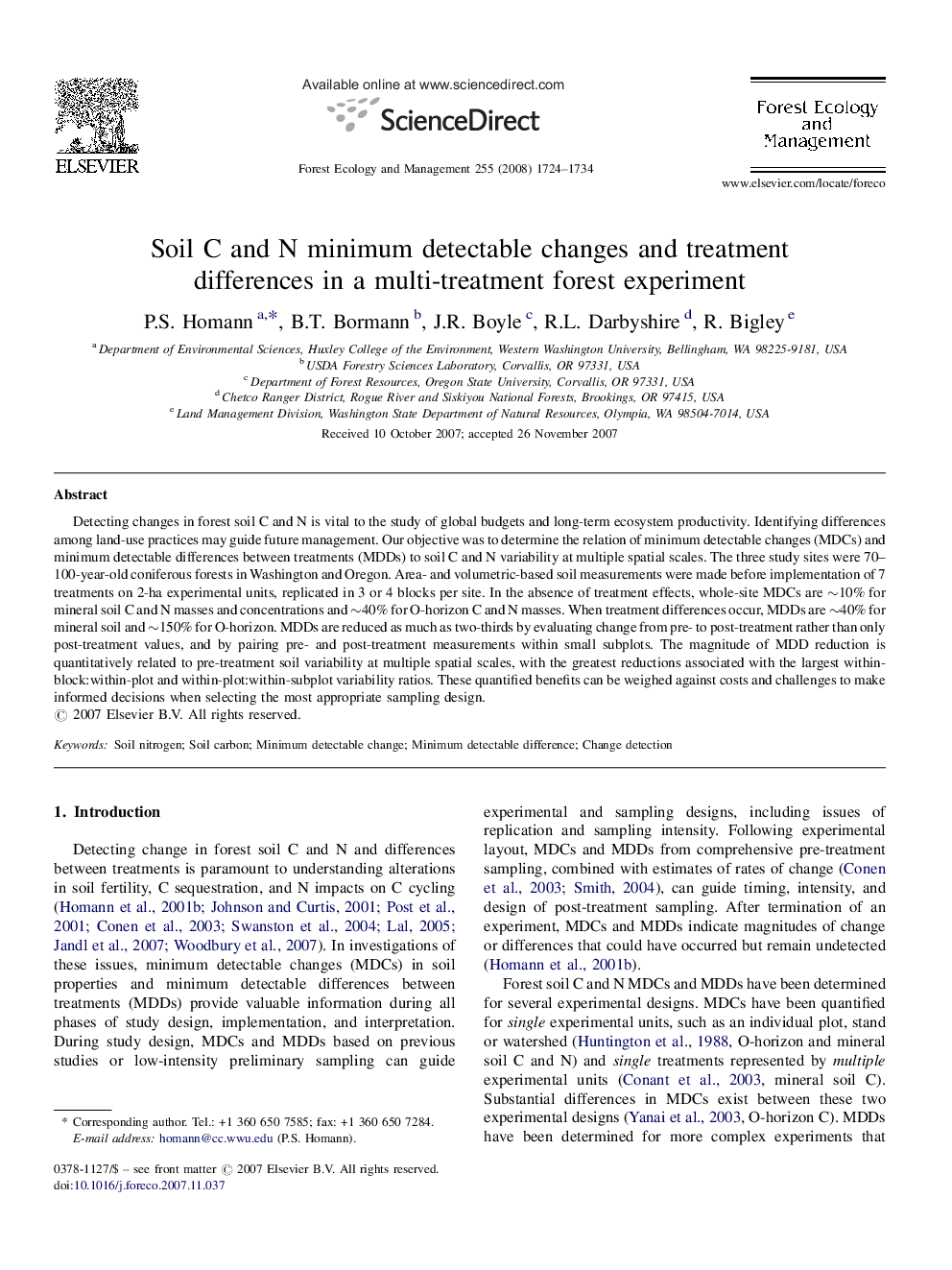| Article ID | Journal | Published Year | Pages | File Type |
|---|---|---|---|---|
| 89503 | Forest Ecology and Management | 2008 | 11 Pages |
Detecting changes in forest soil C and N is vital to the study of global budgets and long-term ecosystem productivity. Identifying differences among land-use practices may guide future management. Our objective was to determine the relation of minimum detectable changes (MDCs) and minimum detectable differences between treatments (MDDs) to soil C and N variability at multiple spatial scales. The three study sites were 70–100-year-old coniferous forests in Washington and Oregon. Area- and volumetric-based soil measurements were made before implementation of 7 treatments on 2-ha experimental units, replicated in 3 or 4 blocks per site. In the absence of treatment effects, whole-site MDCs are ∼10% for mineral soil C and N masses and concentrations and ∼40% for O-horizon C and N masses. When treatment differences occur, MDDs are ∼40% for mineral soil and ∼150% for O-horizon. MDDs are reduced as much as two-thirds by evaluating change from pre- to post-treatment rather than only post-treatment values, and by pairing pre- and post-treatment measurements within small subplots. The magnitude of MDD reduction is quantitatively related to pre-treatment soil variability at multiple spatial scales, with the greatest reductions associated with the largest within-block:within-plot and within-plot:within-subplot variability ratios. These quantified benefits can be weighed against costs and challenges to make informed decisions when selecting the most appropriate sampling design.
